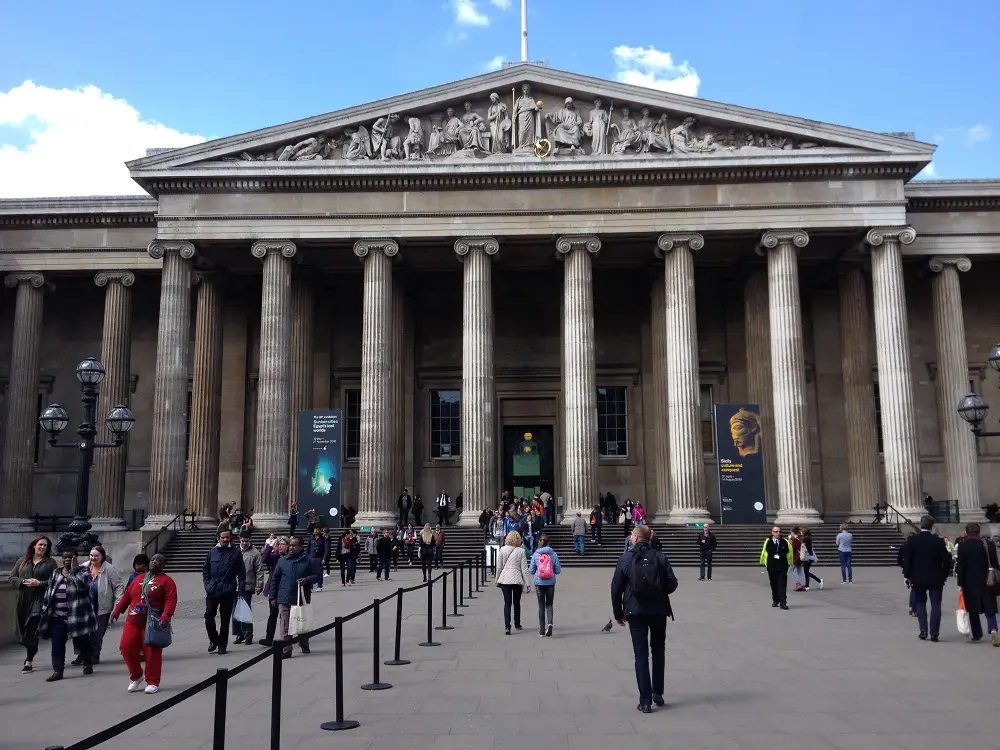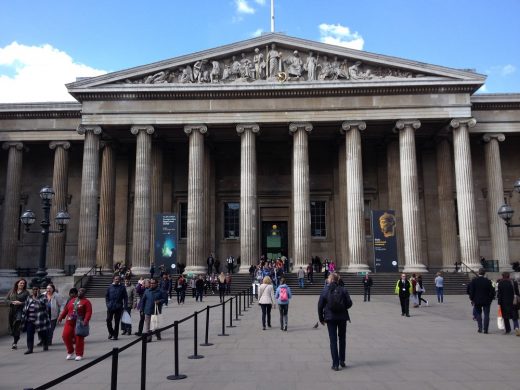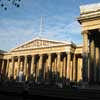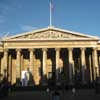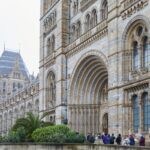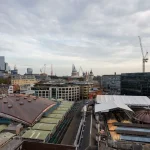British Museum in London, Robert Smirke building, Great Court picture, Architects, Location, Date
British Museum London Architecture
BM Building, Bloomsbury, England design by Robert Smirke architect, UK
8 May 2024
British Museum launches international architectural competition
British Museum Western Range Architecture Competition
7 Dec 2020
British Museum Building in London
The Great Court at the British Museum turns 20
Date built: 2000
Design: Foster + Partners
The British Museum’s Great Court turned twenty on Sunday 6 December 2020. As the departure point for Museum visitors, it has transformed the experience of the Museum. Since it opened, 113 million people have walked under its arched glass roof with its 3,312 triangular panes of glass. On social media, it is the most photographed space in the Museum.
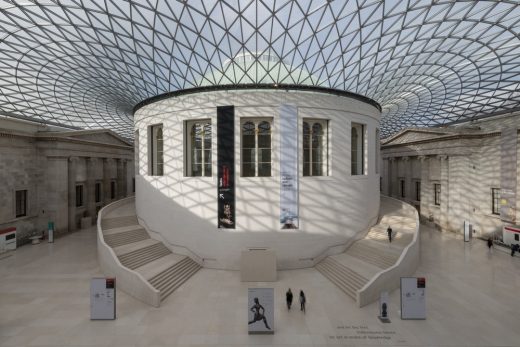
photo : Nigel Young / Foster + Partners
British Museum Great Court London
22 Apr 2016 – new photo loaded
British Museum Building
Date built: 1823-47
Design: Sir Robert Smirke
Address: Great Russell St, London WC1B 3DG
Phone: 020 7323 8299
New photos from 12 November 2012:
Photos © Keepclicking – added 10 Sep 2012:
British Museum entry facade:
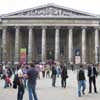
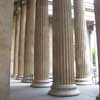
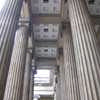
photos © Adrian Welch
British Museum Great Court
Dates built: 1994-2000
Design: Foster & Partners
British Museum Great Court:
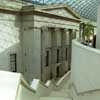
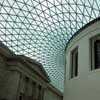
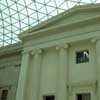
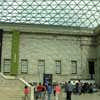
photos © AW
British Museum Conservation + Exhibition Spaces
Dates built: 2007-11
Design: Rogers Stirk Harbour & Partners
Location: Bloomsbury, north central London
The Museum has a rich architectural heritage, the site has developed and grown at each stage of its history.
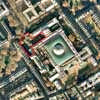
aerial photo © the Trustees of the British Museum
British Museum Great Court
Design: Foster & Partners
The courtyard at the centre of the British Museum was one of Londons long-lost spaces. Originally an open garden, soon after its completion in the mid-nineteenth century it was filled by the round Reading Room and its associated bookstacks. Without this space the Museum was like a city without a park. This project is about its reinvention.
In terms of visitor numbers over five million annually – the British Museum is as popular as the Louvre in Paris or the Metropolitan Museum of Art in New York. In the absence of a centralised circulation system this popularity caused a critical level of congestion throughout the building and created a frustrating experience for the visitor. The departure of the British Library to St Pancras provided the opportunity to clear away the bookstacks and to recapture the courtyard to give the building a new public focus.
The Great Court is entered from the Museums principal level, and connects all the surrounding galleries. Within the space – the largest enclosed public space in Europe – there are information points, a bookshop and a caf. At its heart is the magnificent space of the restored Reading Room, now an information centre and library of world cultures, which for the first time in its history is open to all. Broad staircases encircle the Reading Room and lead to a gallery for temporary exhibitions with a restaurant above. Below the level of the Court are the new Sainsbury African Galleries, an education centre, and facilities for schoolchildren.
British Museum Great Court + existing space to east:
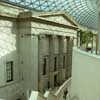
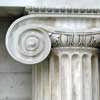
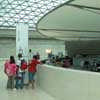
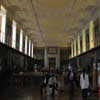
photos © Adrian Welch
The glazed canopy that makes all this possible is a fusion of state-of-the-art engineering and economy of form. Its unique geometry is designed to span the irregular gap between the drum of the Reading Room and the courtyard facades, and forms both the primary structure and the framing for the glazing, which is designed to maximise daylight and reduce solar gain.
As a cultural square, the Court also resonates beyond the confines of the Museum, forming a new link in the pedestrian route from the British Library to Covent Garden and the river. To complement this civic artery, the Museums forecourt has been freed from cars and restored to form a new public space. Like the Great Court it is open to the public from first thing in the morning to early evening, creating a major amenity for London.
North facade, at rear of the British Museum:
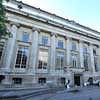
photo © Nick Weall
British Museum Great Court – Building Information
Client: Trustees of the British Museum
Consultants: Buro Happold, Northcroft Nicholson, Buro Happold, Claude Engle Lighting Consultant, Emmer Pfeninger, FEDRA, Giles Quarme Associates / Caroe and Partners / Ian Bristow, MACE Ltd, Mark Johnson Associates, Sandy Brown Associates
British Museum Great Court information from Foster & Partners
British Museum Building Extension
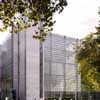
image © the Trustees of the British Museum
British Museum Building Extension
British Museum Building Extension
Special Exhibitions Centre
The Museum has built an enviable reputation in recent years for once in a lifetime exhibitions such as The First Emperor: China’s Terracotta Army and Hadrian: Empire and Conflict as well as smaller, thought-provoking shows highlighting contemporary middle-eastern art, Japanese crafts and American print-making.
The Museum has been able to use the Reading Room as a temporary exhibition venue to house some of these exhibitions but is in urgent need of a flexible purpose-built exhibition space to accommodate more visitors to ensure a comfortable and engaging experience. The Northwest Development includes a temporary exhibition space of over 1,000 sqm which will allow the Museum to cement its status as a leader in curating, designing and displaying special exhibitions.
Science and Conservation Laboratories
The British Museum has the largest conservation and science department in the country, covering an extensive range of materials, both ancient and modern, from the Museum’s huge and varied collection. The department is internationally recognised for its ground-breaking work, creating new knowledge and new techniques that are shared with museums thought the UK and the world.
Current facilities are in need of updating and the state-of-the-art laboratories, studios and library facilities in the development will ensure the Museum can continue to care for and research its collection. It will also allow for an expansion of the Museum’s highly regarded conservation training programme.
Logistics and Collection handling
The British Museum is committed to lending objects from the collection within the UK and across the world. The Museum lends more of its collection than any other museum or gallery, 4,000 objects to 150 institutions in 2008. A dedicated area for the preparation of loan material will ensure the safety of the thousands of objects brought into, and sent out of the Museum every year. Secure loading bays will provide direct access to the new special exhibition space, conservation and science facilities and the rest of the Museum.
Study collection storage
The world collection of the British Museum includes upwards of seven million artefacts. The majority of these objects comprise the study collection, objects which are not on permanent display for conservation reasons or because they are primarily an academic resource. On-site facilities to house the study collections will provide improved access for students, academics and the public, as well as modern, environmentally controlled systems able to maintain the stable conditions necessary for the preservation of objects.
British Museum architect : Robert Smirke
Location: British Museum, London, England, UK
London Buildings
Contemporary London Architecture Designs
London Architecture Designs – chronological list
London Architectural Tours – tailored UK capital city walks by e-architect
Nomad Hotel, Covent Garden
Design: Roman and Williams
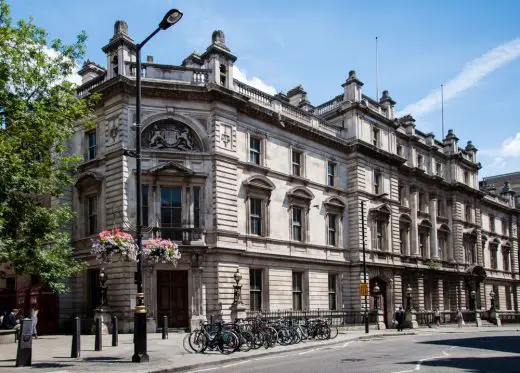
photo © Emsie Jonker
NoMad London Hotel in Covent Garden
Comments / photos for the British Museum Development London Great Court design by Foster + Partners architects page welcome
Website: www.britishmuseum.org

